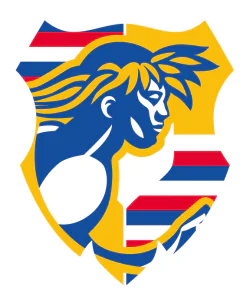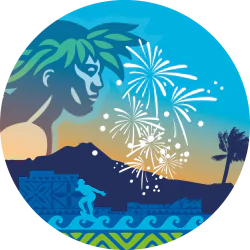AN OPEN FINISH LINE IS ONE OF HONOLULU MARATHON’S GREAT TRADITIONS
By Rich Sands, @sands
(c) 2022 Race Results Weekly, all rights reserved
HONOLULU (11-Dec) — While there was much fanfare shortly after 7 a.m. when Asefa Mengstu of Ethiopia was the first runner across the finish line at the 50th running of the Honolulu Marathon, that was just the beginning of daylong celebration of running here. More than 14 hours after the race had begun at 5:00 a.m., there were still a few athletes out on the course making their way to the finish. And to the Honolulu Marathon Association, the founders and organizers of the race, those participants are just as important as the winners.
As the race’s website proudly proclaims, “The Honolulu Marathon is the only world-class marathon that allows ALL participants to finish. There is no cut-off time!” Regardless of how long it takes –the final finisher may come through anywhere from 15 to 18 hours after the start– the official results recognize everyone who makes it through the 26.2-mile course. Finisher medals and t-shirts are presented to every last marathoner.
“It’s in the spirit of Hawaii. This is a very laid-back place,” said Dr. Jim Barahal, president of the Honolulu Marathon Association. “It’s in our DNA to have no time limit. We’re not pressuring you. Define your own experience. Your time doesn’t matter to us. We welcome you as a finisher.”
Because of this unique feature, the race is known to have the highest percentage of first-time marathoners. In fact, marathon newbies made up 35 percent of the field this year, and more than half of the entrants were running Honolulu for the first time.
This year, as the race continues its strong rebound from the pandemic, there were 14,645 starters in the marathon (along with 5,722 in the concurrently run Start to Park 10-K). Many marathoners, rookies and veterans alike, come to Honolulu each December for the opportunity to run without fear of being turned away after six or more hours out on the course. “You don’t want to travel someplace for a marathon and then get pulled off the course,” Barahal added. “Try explaining that to your friends and family back home.”
And considering that the Honolulu Marathon is a warm-weather race, the policy adds an extra layer of safety for athletes who might over-extend themselves in potentially challenging conditions to hit an unreasonable time limit. “It stops people from racing too hard to that cutoff,” Barahal explained. “It’s better for people to hang loose and not worry about that. A lot of them are obviously walking and that’s fantastic.”
And despite the fact that the final finishers are coming through more than half a day after the winner, there is typically an enthusiastic crowd of organizers, volunteers and spectators on hand to cheer for them. “Often the last handful of finishers are battling some adversity or health problem, or they’re just having a bad day,” Barahal said. “Some of the stories are quite remarkable and moving.”
One of the last finishers this year was 63 year-old Sandra Schawang from Kill Devil Hills, N.C. It took her a little more than 14 hours to finish the course. She was both exhausted and elated.
“I chose this marathon because there’s no time limit,” she said just after finishing tonight. “There’s no limit on the number of people that can do this race and there’s no time limit.” She continued: “People are great. People are just really great. Everyone out there was so helpful. There were people driving around making sure everyone was OK. It was wonderful.”




